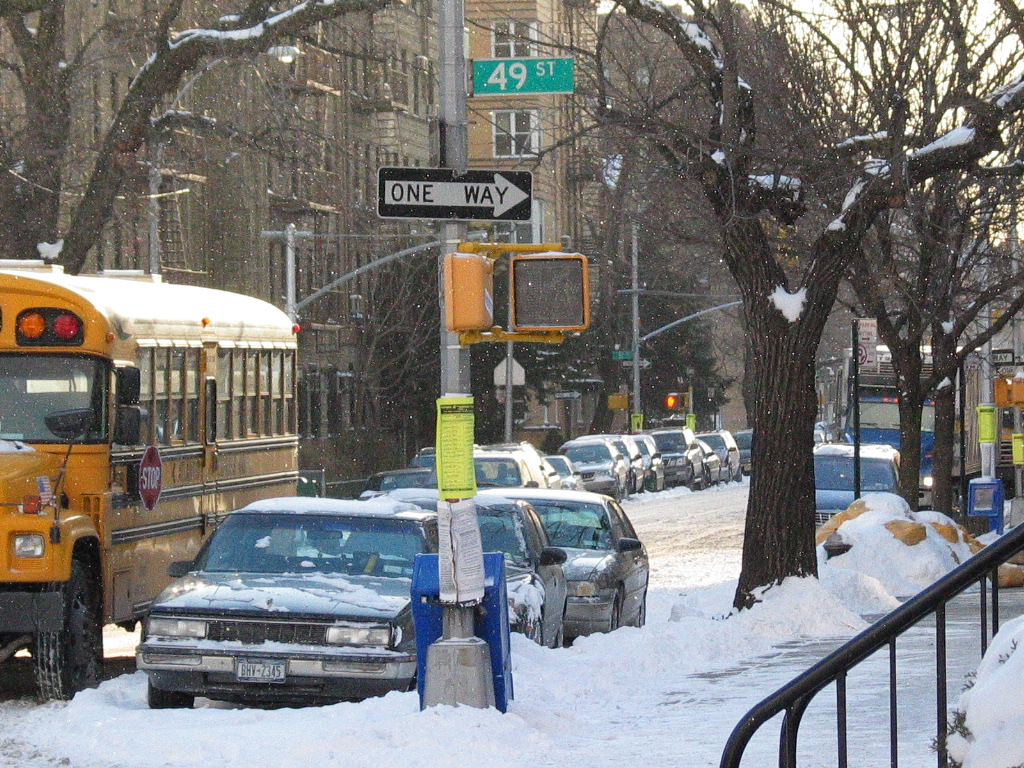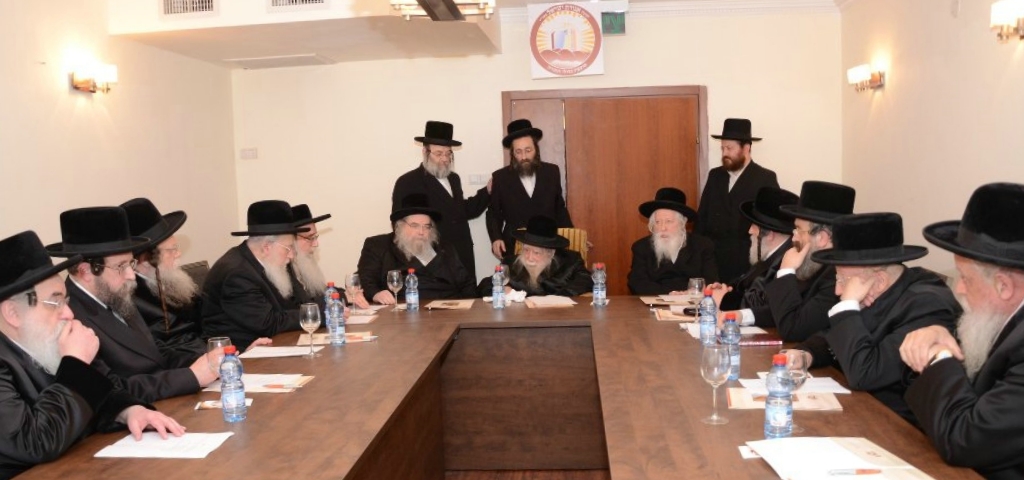|
Pshischa (Hasidic Dynasty)
Peshischa (Yiddish: פשיסחה) was an important Hasidic school of thought based out of Przysucha, Poland founded by Yaakov Yitzchak Rabinowicz, which flourished during the late 18th to early 19th century. Its teachings are the foundation for Kotzk Hasidism, Ger Hasidism, Amshinov Hasidism, Zychlin Hasidism, Aleksander Hasidism, Vurka Hasidism, Sochatchov Hasidim, Porisov Hasidim, Biala Hasidim and Izhbitza-Radzin Hasidism. History Yaakov Yitzchak Rabinowicz preached an elitist, rationalistic Hasidism that centered on Talmudic study and formed a counterpoint to the miracle-centered Hasidism of Lublin. His immediate successor, Simcha Bunim of Peshischa, brought Peshischa to its highest point and kickstarted a counter-revolutionary movement which challenged the Hasidic norm. While under the leadership of Rabinowicz, Peshischa was closer to a philosophy whereas, under Simcha Bunim it was transformed into a religious movement. Under Simcha Bunim's leadership, centers ... [...More Info...] [...Related Items...] OR: [Wikipedia] [Google] [Baidu] |
Lublin
Lublin is the ninth-largest city in Poland and the second-largest city of historical Lesser Poland. It is the capital and the center of Lublin Voivodeship with a population of 336,339 (December 2021). Lublin is the largest Polish city east of the Vistula River and is about to the southeast of Warsaw by road. One of the events that greatly contributed to the city's development was the Polish-Lithuanian Union of Krewo in 1385. Lublin thrived as a centre of trade and commerce due to its strategic location on the route between Vilnius and Kraków; the inhabitants had the privilege of free trade in the Grand Duchy of Lithuania. The Lublin Parliament session of 1569 led to the creation of a real union between the Crown of the Kingdom of Poland and the Grand Duchy of Lithuania, thus creating the Polish–Lithuanian Commonwealth. Lublin witnessed the early stages of Reformation in the 16th century. A Calvinist congregation was founded and groups of radical Arians appeared in the city ... [...More Info...] [...Related Items...] OR: [Wikipedia] [Google] [Baidu] |
Ramat Aharon
Ramat Aharon ( he, רׇמַת אַהֲרֹן) is a neighbourhood in the eastern part of Bnei Brak, Israel. The neighbourhood was established in 1967 and was named after Rabbi Aharon Kotler.English language description on plaque in the neighbourhood (see photo). The streets of the neighbourhood are lined with buildings that house large institutions of Torah and ''chesed'', which give the neighbourhood its unique character. The ''Av Beit Din'' of Ramat Aharon is Rabbi Nissim Karelitz Shmaryahu Yosef Nissim Karelitz ( he, נסים קרליץ; July 19, 1926 – October 21, 2019) was an Orthodox Jewish rabbi and posek who served as the chairman of the ''beis din tzedek'' (rabbinical court) of Bnei Brak. Biography Karelitz .... References {{coord, 32.0857, N, 34.8421, E, source:wikidata, display=title Bnei Brak Neighborhoods in Israel ... [...More Info...] [...Related Items...] OR: [Wikipedia] [Google] [Baidu] |
Ostrów Lubelski
Ostrów Lubelski is a town in Gmina Ostrów Lubelski in Lubartów County, Lublin Voivodeship in Poland. Geography Within the territory of the town and commune there are three lakes: Miejskie Lake, Kleszczów Lake and Czarne Lake. The commune is a typically agricultural area. It is constituted by 1,009 farms and 167 plots of ground. Ostrów Lubelski belongs to the historic province of Lesser Poland. The majority of farms are not concentrated on one particular kind of production; some specialise in cattle breeding for export, others in poultry breeding (geese, ducks), and yet others in pig breeding. Climate and water supplies are favourable for agriculture. In addition to grain, farms also grow herbs (thyme, lovage, camomile and mallow) and oil plants. History "Ostrów" derives from a Slavic word meaning "island". On 25 January 1548 King Sigismund the Old granted a foundation privilege to Ostrów along with a privilege of hereditary office to Wacław Grzymała, a nobleman. ... [...More Info...] [...Related Items...] OR: [Wikipedia] [Google] [Baidu] |
Borough Park, Brooklyn
Borough Park (also spelled Boro Park) is a neighborhood in the southwestern part of the borough of Brooklyn, in New York City. The neighborhood is bordered by Bensonhurst to the south, Dyker Heights to the southwest, Sunset Park to the west, Kensington and Green-Wood Cemetery to the northeast, Flatbush to the east, and Midwood to the southeast. It is economically diverse, and home to one of the largest Orthodox Jewish communities outside Israel, with one of the largest concentrations of Jews in the United States, and Orthodox traditions rivaling many insular communities. As the average number of children in Orthodox and Haredi families is 6.72, Boro Park is experiencing a sharp growth in population. The neighborhood is part of Brooklyn Community District 12, and its primary ZIP Code is 11219. It is patrolled by the 66th Precinct of the New York City Police Department. Politically, it is represented by the New York City Council's 38th, 39th, and 44th Districts. History ... [...More Info...] [...Related Items...] OR: [Wikipedia] [Google] [Baidu] |
Bnei Brak
Bnei Brak or Bene Beraq ( he, בְּנֵי בְּרַק ) is a city located on the central Mediterranean Sea, Mediterranean Israeli coastal plain, coastal plain in Israel, just east of Tel Aviv. A center of Haredi Judaism, Bnei Brak covers an area of 709 hectares (1752 acres, or 2.74 square miles), and had a population of in . It is one of the poorest and most densely populated cities in Israel, and the 5th-most List of cities by population density, densely populated city in the world. History Bnei Brak takes its name from the ancient Biblical city of Beneberak, mentioned in the Hebrew Bible, Tanakh (Joshua 19:45) in a long list of towns within the allotment of the tribe of Dan. Bnei Brak was founded as an agricultural village by eight Polish Hasidic Judaism, Hasidic families who had come to Palestine as part of the Fourth Aliyah. Yitzchok Gerstenkorn led them. It was founded about 4 kilometers (2.5 miles) from the site of Biblical Beneberak. Bnei Brak was originally a moshava, ... [...More Info...] [...Related Items...] OR: [Wikipedia] [Google] [Baidu] |
Agudat Yisrael
Agudat Yisrael ( he, אֲגוּדָּת יִשְׂרָאֵל, lit., ''Union of Israel'', also transliterated ''Agudath Israel'', or, in Yiddish, ''Agudas Yisroel'') is a Haredi Jewish political party in Israel. It began as a political party representing Haredi Jews in Poland, originating in the Agudath Israel movement in Upper Silesia. It later became the Party of many Haredim in Israel. It was the umbrella party for many, though not all, Haredi Jews in Israel until the 1980s, as it had been during the British Mandate of Palestine. Since the 1980s, it has become a predominantly Hasidic party, though it often combines with the Degel HaTorah non-Hasidic Ashkenazi Haredi party for elections and coalition-forming (although not with the Sephardi and Mizrahi Haredi party Shas). When so combined, they are known together as United Torah Judaism. History When political Zionism began to emerge in the 1890s, and recruit supporters in Europe and America, it was opposed by many Orthodox ... [...More Info...] [...Related Items...] OR: [Wikipedia] [Google] [Baidu] |
Jerusalem
Jerusalem (; he, יְרוּשָׁלַיִם ; ar, القُدس ) (combining the Biblical and common usage Arabic names); grc, Ἱερουσαλήμ/Ἰεροσόλυμα, Hierousalḗm/Hierosóluma; hy, Երուսաղեմ, Erusałēm. is a city in Western Asia. Situated on a plateau in the Judaean Mountains between the Mediterranean Sea, Mediterranean and the Dead Sea, it is one of the List of oldest continuously inhabited cities, oldest cities in the world and is considered to be a holy city for the three major Abrahamic religions: Judaism, Christianity, and Islam. Both Israelis and Palestinians claim Jerusalem as their Capital city, capital, as Israel maintains its primary governmental institutions there and the State of Palestine ultimately foresees it as its seat of power. Because of this dispute, Status of Jerusalem, neither claim is widely recognized internationally. Throughout History of Jerusalem, its long history, Jerusalem has been destroyed at least twice, Sie ... [...More Info...] [...Related Items...] OR: [Wikipedia] [Google] [Baidu] |
Siedlce
Siedlce [] ( yi, שעדליץ ) is a city in eastern Poland with 77,354 inhabitants (). Situated in the Masovian Voivodeship (since 1999), previously the city was the capital of a separate Siedlce Voivodeship (1975–1998). The city is situated between two small rivers, the Muchawka and the Helenka, and lies along the European route E30, around east of Warsaw. It is the fourth largest city of the Voivodeship, and the seat of the Roman Catholic Diocese of Siedlce. Siedlce is a local educational, cultural and business center. History The city, which is a part of the historical province of Lesser Poland, was most probably founded some time before the 15th century, and was first mentioned as ''Siedlecz'' in a document issued in 1448. In 1503, local szlachta, nobleman Daniel Siedlecki erected a new village of the same name nearby, together with a church. In 1547 the town was granted Magdeburg rights by King Sigismund the Old. Siedlce as an urban center was created after a merger of ... [...More Info...] [...Related Items...] OR: [Wikipedia] [Google] [Baidu] |
Szydłowiec
Szydłowiec (; Hebrew: שידלוביץ, Yiddish: שידלאָווצע; German: ''Schiedlowietz'') is a town in Szydłowiec County, Mazovian Voivodeship, south-central Poland, with 5,243 inhabitants (December 31, 2005). It is the seat of Gmina Szydłowiec (commune). Szydłowiec is part of the historic region of Lesser Poland. History From the 12th century the environs of Szydłowiec belonged to the powerful knightly family of Odrowąż, who were descended from Moravian-Bohemian Baworowic family. In the 13th century the site of the present castle was occupied by a stronghold on an artificial island with wood and earth defences and by a village called Szydłowiec. The present town came into being in the early 15th century. It was a private town, administratively located in the Radom County in the Sandomierz Voivodeship in the Lesser Poland Province of the Kingdom of Poland, and together with the neighbouring estate was the property of the Szydłowiecki and Radziwiłł fami ... [...More Info...] [...Related Items...] OR: [Wikipedia] [Google] [Baidu] |
Natan David Rabinowitz
Rabbi Natan David Rabinowitz (1814- Szydłowiec, 1865), the son of Rabbi Yerachmiel of Przysucha, was a Polish rabbi who established a local Hasidic court with a large following.Neil Rosenstein ''The Unbroken Chain: Biographical Sketches and Genealogy of Illustrious Jewish Families from the 15th-20th Century'' Volume 1 & 2 : Volume 1 - 1990 "R. Nathan David Rabinowitz, the Admur of Szydlowiec, was born in Przysucha in 1814 and died in Szydlowiec in 1865. He was opposed to Chassidim who stated they required a long time to prepare themselves before prayer." He was the patriarch of the Biala Hasidic Dynasty. :''He is to be distinguished from the talmudic scholar Nosson Dovid Rabinowich Nosson Dovid Rabinowich is an American scholar of classical and medieval Jewish history former Dean of Ahavath Torah Institute in Brooklyn, New York. He is a descendant of Nathan David Rabinowich of Shidlowce and is a modern advocate of "the theory ... (Rabinovits, Natan David ben Yehudah Leyb) author ... [...More Info...] [...Related Items...] OR: [Wikipedia] [Google] [Baidu] |
Dynner, Glenn
Glenn Davis Dynner (born April 11, 1969) is an American author and historian specializing in religion and history of East European Jewry. He is the Co-Editor-in-Chief of '' Shofar: An Interdisciplinary Journal of Jewish Studies'' and a Professor and Chair of Religion at Sarah Lawrence College (Chair of Humanities, 2014-16). Education Dynner received his B.A. in Comparative History from Brandeis University in 1993, his M.A. in Jewish Studies from McGill University in 1997, and his Ph.D. in Near Eastern & Judaic Studies from Brandeis University in 2002 (supervised by Antony Polonsky). He works primarily in Polish, Yiddish, and Hebrew sources on the Jewish social and religious history in Poland, and specializes in the Hasidic movement. Media appearances In 2011, Dynner appeared on NBC's ''Who Do You Think You Are?'' with actress Gwyneth Paltrow. Throughout the episode, Dynner helps Gwyneth Paltrow uncover her ancestral Jewish past. On the same show and its spin-offs, he also consul ... [...More Info...] [...Related Items...] OR: [Wikipedia] [Google] [Baidu] |



.jpg)

